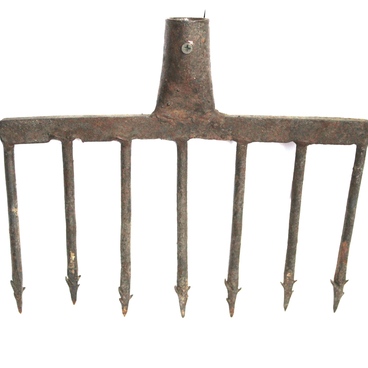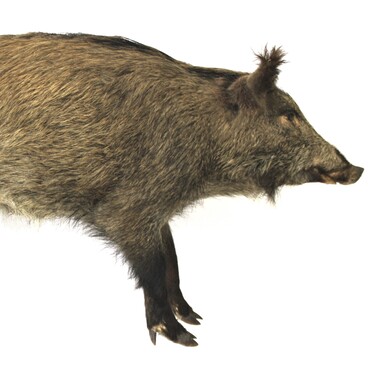A samovar is a metal vessel designed for boiling water and making tea. The first samovars appeared in the 18th century. The ‘great-grandfather’ of the samovar was a sbitennik, a container for preparing a traditional beverage called sbiten, which was made from honey and medicinal herbs. The water was heated by an internal combustion chamber, which was essentially a tall tube filled with charcoal.
The Museum of Local History and Lore has a collection of more than 50 samovars. Among these are charcoal-fueled, combination, and electric samovars. The samovar featured in the Merchant’s Shop exposition was acquired by the museum from Nina Barinova in 1983.
There are imprints of eight medals on the body of the samovar over the spigot. Over the medals, there is an imprint of the coat of arms of the Russian empire: a two-headed eagle with three crowns and bands, and under it, there is an inscription that reads: “The Charter is Approved by Highest Authority in 1898.” There is also an inscription reading: “The Partnership of the Steam Factory of the Heirs of Vasily Batashev.” Under this inscription, there is an imprint of the factory trademark in the shape of a coat-of-arms shield of bands along the sides and along the bottom. Inscriptions on the bands say “Factory Trademark” and “Approved by Government in 1898.”
The famous Batashevs factory opened in Tula in 1840 when gunsmith Stepan Batashev switched to making samovars. His business grew, but in 1861, his factory burned down, and its owner had a stroke. It was his sons Vasily and Alexander that ended up rebuilding the factory. In just a few years, the company earned a very good reputation thanks to the high quality of their products, and before long, there was a lot of demand for Batashev samovars both in Russia and abroad.
In 1890, the Batashev brothers split up their assets: Vasily got the land and the factory, while Alexander got the money. After Vasily’s death, Alexander took custody of his children. When the eldest daughter Lidia got married, her husband Fedor Zanftleben set up an equal partnership with Vasily’s widow and her other legal-age daughter. The charter of the Partnership of the Steam Samovar Factory of the Heirs of Vasily Batashev in Tula was approved in 1898.
The factory soon became the best samovar manufacturer in Tula in the early 20th century. In 1915, it was making 120,000 samovars per year, but the partnership only survived until 1918: after the Revolution, the factory was expropriated by the new Soviet government and renamed the Tula ammunition factory.
The Museum of Local History and Lore has a collection of more than 50 samovars. Among these are charcoal-fueled, combination, and electric samovars. The samovar featured in the Merchant’s Shop exposition was acquired by the museum from Nina Barinova in 1983.
There are imprints of eight medals on the body of the samovar over the spigot. Over the medals, there is an imprint of the coat of arms of the Russian empire: a two-headed eagle with three crowns and bands, and under it, there is an inscription that reads: “The Charter is Approved by Highest Authority in 1898.” There is also an inscription reading: “The Partnership of the Steam Factory of the Heirs of Vasily Batashev.” Under this inscription, there is an imprint of the factory trademark in the shape of a coat-of-arms shield of bands along the sides and along the bottom. Inscriptions on the bands say “Factory Trademark” and “Approved by Government in 1898.”
The famous Batashevs factory opened in Tula in 1840 when gunsmith Stepan Batashev switched to making samovars. His business grew, but in 1861, his factory burned down, and its owner had a stroke. It was his sons Vasily and Alexander that ended up rebuilding the factory. In just a few years, the company earned a very good reputation thanks to the high quality of their products, and before long, there was a lot of demand for Batashev samovars both in Russia and abroad.
In 1890, the Batashev brothers split up their assets: Vasily got the land and the factory, while Alexander got the money. After Vasily’s death, Alexander took custody of his children. When the eldest daughter Lidia got married, her husband Fedor Zanftleben set up an equal partnership with Vasily’s widow and her other legal-age daughter. The charter of the Partnership of the Steam Samovar Factory of the Heirs of Vasily Batashev in Tula was approved in 1898.
The factory soon became the best samovar manufacturer in Tula in the early 20th century. In 1915, it was making 120,000 samovars per year, but the partnership only survived until 1918: after the Revolution, the factory was expropriated by the new Soviet government and renamed the Tula ammunition factory.

